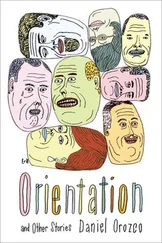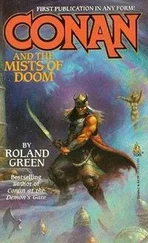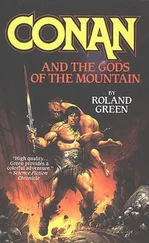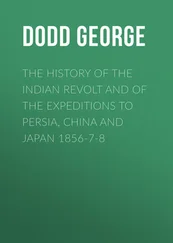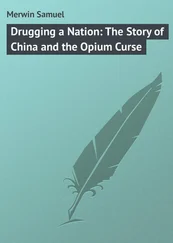Chapter 3examines economic relations, which have been evolving from a narrow, extractive agenda to a wide-ranging engagement. It first considers trends in trade, aid and investment, showing how China matters increasingly in Africa but the continent does not have comparable economic importance to China. Second, it examines how approaches to economic development became based on an industrialization-led ‘structural transformation’ agenda and support the AU’s Agenda 2063, an expansive vision for unity, prosperity, peace and ‘transforming Africa into the global powerhouse of the future’ adopted in 2015. As well as a focus on infrastructure construction and manufacturing, economic relations have seen the BRI become more central to current and future ties. Third, China’s role as a holder of African debt reveals much about how relations have changed. China’s response to the debt crisis facing African countries like Zambia, Angola or Kenya in 2020, in part but by no means only arising from its previous lending patterns as well as impacts of the COVID-19 pandemic, has been reshaping China–Africa relations in important ways. Finally, it argues that the idea that China can exert transformative change in economic development is a mirage in the face of the severe, intractable challenges facing African countries. These emanate not just from deep global structural constraints but the nature of African states where ruling political elites in countries like Kenya fail to seriously prioritize broad, longer-term developmental need. Further, China’s economic relations with Africa are evolving in a different phase where it was less willing and able to double or triple its financing at FOCAC, with investment dropping and new emphasis on its domestic needs.
Chapter 4examines the ‘China model’, which has become more salient in light of the CCP’s reassertion of power within China and in foreign policy. Meaning different things at different times, this has been redefined under Xi Jinping into a form of authoritarian single-party state capitalism, characterized by extensive party-state control over political and social life, and whose economy involves a strong role of the party-state in core economic sectors together with market-based practices. The decisive New Era trend has seen Beijing more confidently and directly promote Xi’s China model, understood as a set of ideas about political organization and accompanying enabling possibilities, including in technology or investment. The Chinese government still talks publicly about not imposing its model, but under Xi Jinping Beijing has been overtly promoting it and taking a more concerted, confrontational stance. China is one of various external models African states – and others – can potentially engage, but it is upheld by the Chinese government as superior. The CCP’s efforts to promote its model matter, including via sustained, future oriented political party training that positions China for longer-term influence. What ultimately matters most, however, is how political elites in African states like South Africa, Ethiopia, Kenya or Nigeria understand the China model, and the ways in which these understandings are adapted and selectively used for domestic political purposes, sometimes in conjunction with the technical capabilities offered by China or other external partners.
Chapter 5moves to a more micro-level concern with relations between people, including Africans in China, and Chinese in African countries, and the politics this can generate. While multi-billion-dollar mega projects involving Chinese funding and corporations attract headlines – from Algeria’s Great Mosque in Algiers, the largest mosque in Africa with the tallest minaret in the world, to Egypt’s ‘new administrative capital’ city, the DRC’s Grand Inga III dam, Ethiopia’s Grand Renaissance Dam or Tanzania’s prospective Bagamoyo port – ordinary exchanges between ordinary people and micro-dynamics matter. Often overlooked, apart from occasional moments of high political visibility, the everyday dynamics and immense diversity of such relations illustrate a complexity that simple narratives – such as those from the Chinese government about its South–South cooperation or media-fuelled stories about migrants as the vanguard of China’s new empire building in Africa – struggle to convey. Three broad themes are explored. The first is Africans in China, and Chinese migration to Africa, in the context of dynamic transnational trade networks. The second considers the politics of Chinese in African countries, the various levels and ways in which migrants have become prominent, such as Chinese gold miners in Ghana, and how China and African inter-state relations can impact on Chinese communities in Africa. The third considers trends going forward: a new phase for the African population in China with tighter regulation of foreign nationals; the uncertain status of some Chinese communities in African countries; continuing mobility of those who move on; and, in contrast, signs of growing rootedness of Chinese communities in countries like Namibia.
The growing Chinese presence in Africa has also been an important contributing factor behind a new foreign-policy challenge for the Chinese government, namely protecting people as well as economic assets overseas, and was one reason why security became a defining theme in China’s New Era Africa engagement. Chapter 6examines different aspects of New Era security relations, which Xi Jinping termed a major ‘pillar’ of China–Africa relations in 2015. Far from being simply a defensive reaction to threat, mounting risks and vulnerability, and new realities of overseas investment protection imperatives, China’s engagement has had an experimental quality in a continent that has been a testing ground for gaining overseas corporate and military experience. The very challenges different Chinese actors have faced have necessitated and enabled a more proactive military role that, as UN peacekeeping exemplifies, serves China’s bilateral (gaining experience) and multilateral goals (as a self-declared responsible power contributing to global peace and security). The opening of China’s first overseas naval base in Djibouti in 2017 represented a historic departure in China’s foreign security policy. It was, however, one part of a multi-stranded security engagement unfolding concurrent with a reconsideration of the Chinese government’s traditional approach to intervention and non-interference. 22Under Xi Jinping, China has sought to strengthen its principle of ‘non-interference’ even as, in practice, this does not square the circle of a deeper role. The Chinese government maintains public opposition to non-consensual foreign intervention, but has become more accommodating of this in reality, including under the influence of shifting African approaches to intervention.
In just over two decades, China has gone from being a marginal, distant partner of Africa to attaining a leading position as an active participant in continental affairs, whose future importance is clear. These new trends mean more obvious disconnects between the official language of China–Africa relations and the actual realities of China’s more complex and consequential role, raising concerns about the different types of China’s actual, imminent and future power. China’s New Era ascendancy as a leading power in Africa and a self-proclaimed major power with ambitions to global leadership has been generating stronger political reactions in some African countries, as well as support from those who regard China as the future of globalization. In this way, the different aspects of China’s perceived and actual power now exert more obvious influences in relations.
The outline maps of Africa and China on display in Beijing in November 2006 should be impossible now, given how much has changed since then, including China’s more conspicuous and consequential footprint in the continent and the many ways different African actors have used, benefited from and sought to shape relations in their own ways. Nonetheless, for all the official claims about friendship and development of closer ties since then, periodic episodes suggest continuing ignorance and generate new friction and politics. A far more widely seen and high-profile example than the maps on the fringe of the 2006 FOCAC came in February 2018, when the China Central Television’s (CCTV) Spring Festival Gala, known as the world’s ‘most watched national network TV broadcast’, with up to one billion viewers that year, broadcast a comedy sketch that was supposed to celebrate China–Africa relations. 23Instead, it provoked a storm of controversy over the use of blackface by a Chinese actress, a black performer in a monkey costume and the use of tribal African dancers and female attendants from Kenya’s Chinese-built railway linking Nairobi and coastal Mombasa. The sketch reproduced a narrative that was representative of China’s general approach to Africa, in which China is seen as a solution to the continent’s backwardness, and behind the performance was ‘a consistent top-down, ego-boosting effort to see and represent China as a way for Africa to enter modernity’. 24The ‘racist and insensitive portrayals’ of Africans in the sketch was criticized, and there were calls for China to ‘incorporate racial awareness and sensitivity to the production of content by all its media outlets’. 25
Читать дальше

